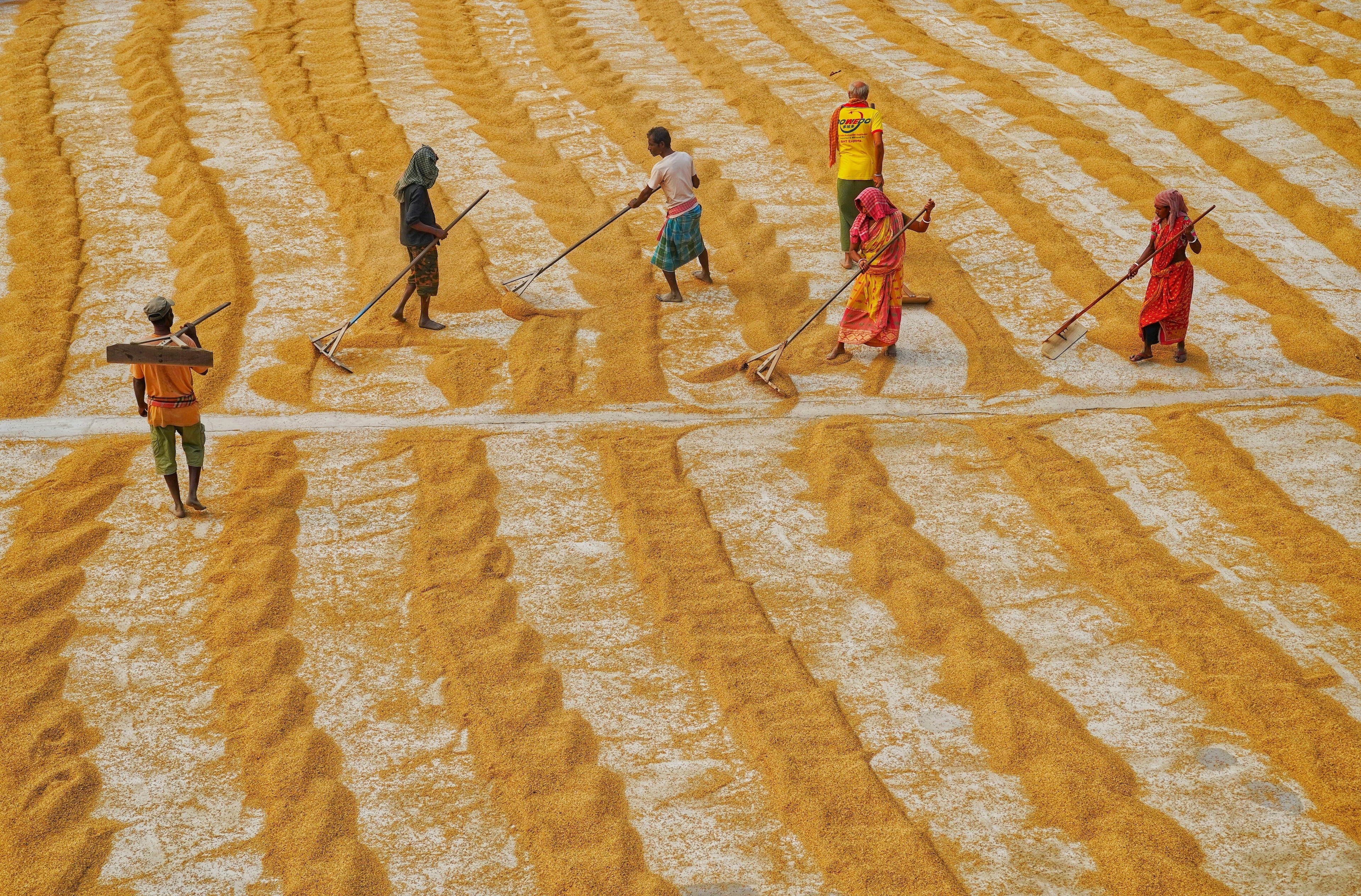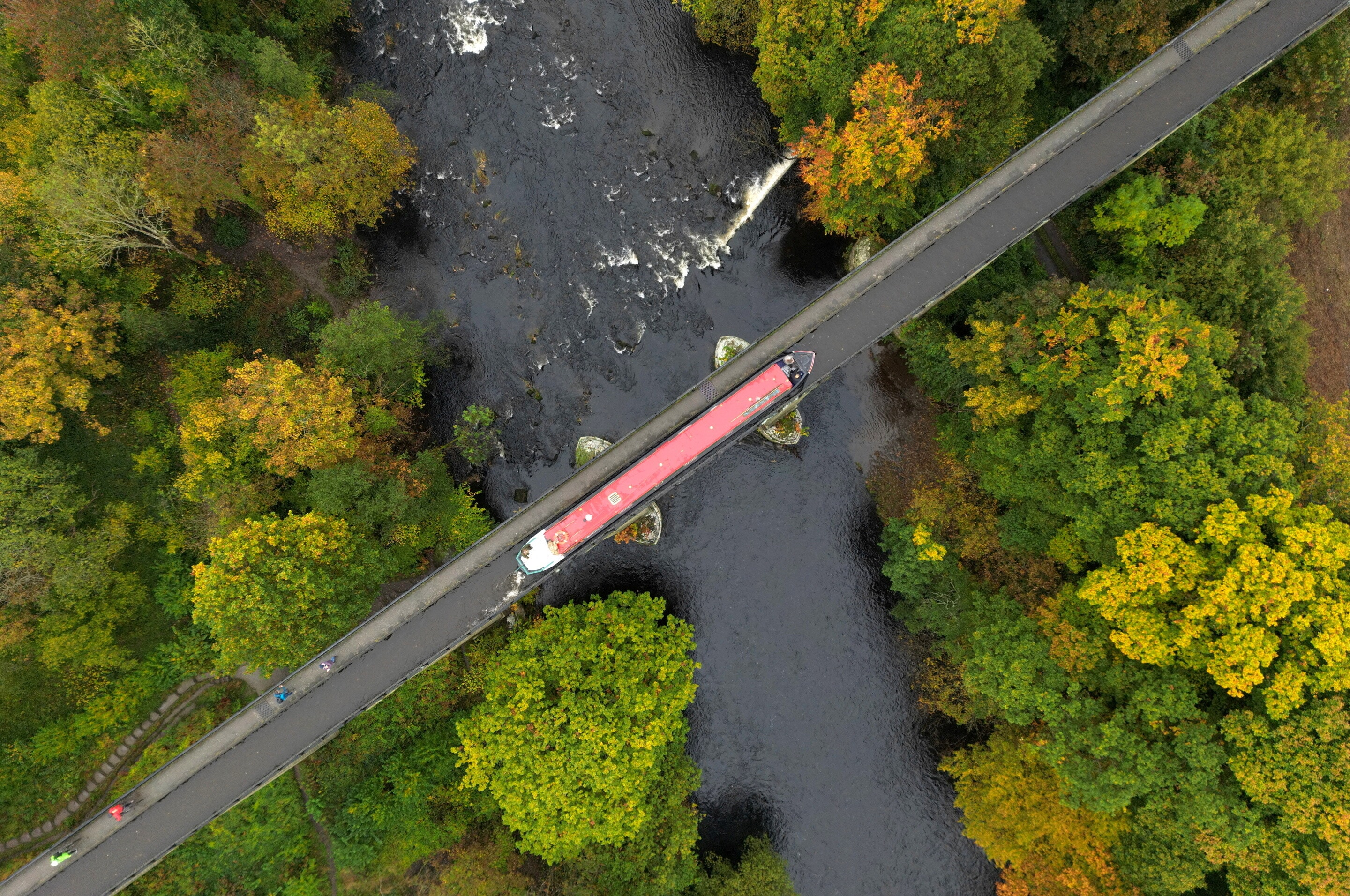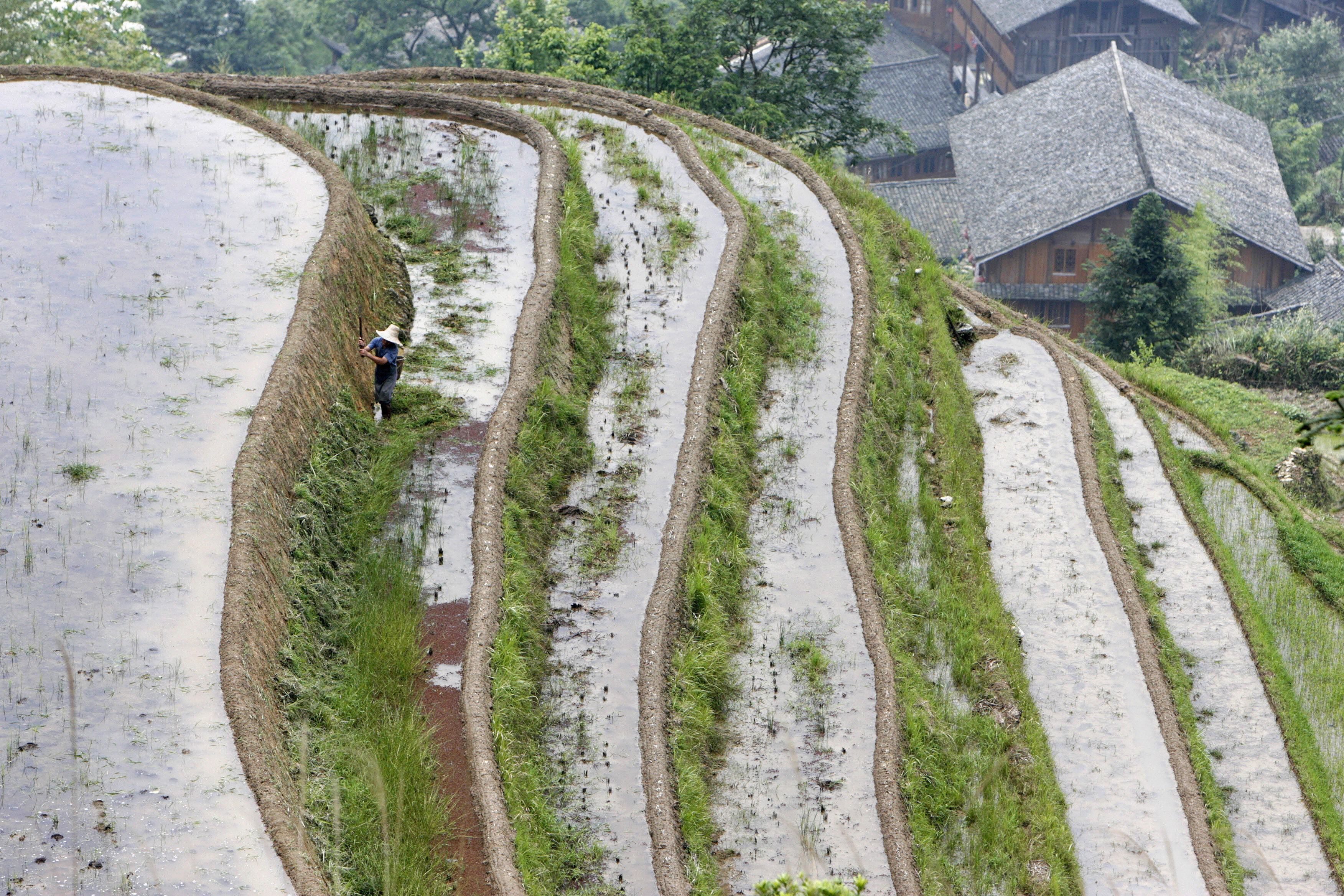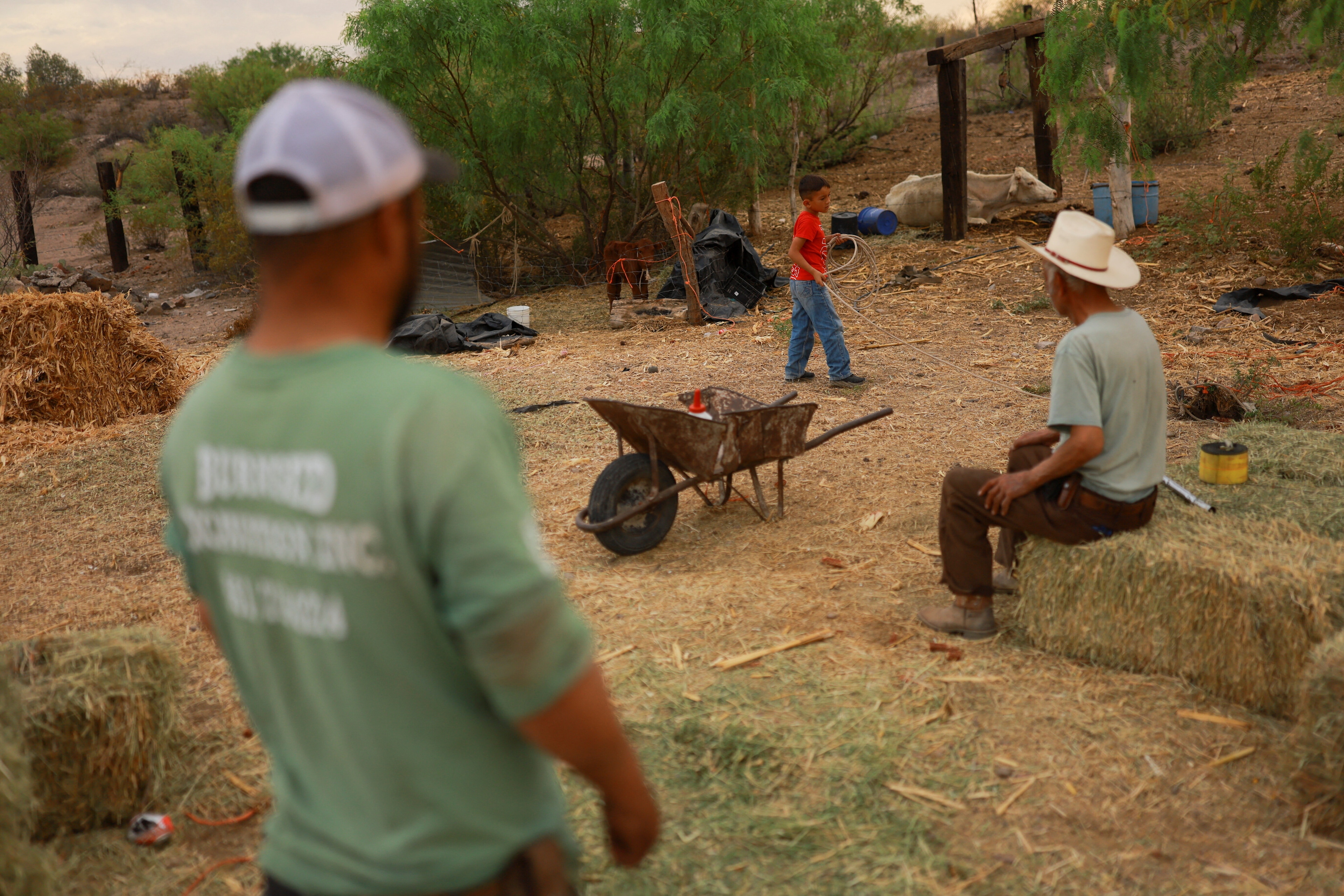This Indian state is overhauling its agriculture strategy — and innovation is at the forefront

Madhya Pradesh is overhauling its agriculture ecosystem, prioritising technological innovation while centring farmers and their needs.
Image: REUTERS/Danish Siddiqui/File Photo
Ajit Kesari
Additional Chief Secretary, Department of Farmer Welfare and Agriculture Development, Government of Madhya PradeshJaskiran Warrik
Lead, Regenerative and Climate Adaptive Projects, Food and Water, World Economic ForumStay up to date:
Food Security
Listen to the article
- Indian agriculture provides livelihoods for 58% of the population and ensures food security for 1.3 billion people.
- Madhya Pradesh, one of India’s leading agricultural states, is overhauling its food and farming strategy, without abandoning its farmers.
- This transition is part of India's central government’s plans to create a self-sufficient India — or Atmanirbhar — a plan that holds food sovereignty at its heart.
As the world population continues to grow and food prices rise, farming ecosystem transformations are becoming increasingly important to address the widening gap in food systems.
India is at the forefront of innovating food systems, and this progress is best displayed in the state of Madhya Pradesh and its population of 73 million.
Innovating food systems
In May 2022, the Department of Farmer Welfare and Agriculture Development signed an MoU with the World Economic Forum, wherein the Food Innovation Hub India (FIH-I) platform will be supported by the government to leverage public, philanthropic and private partnerships focused on deploying innovations and emerging technologies in food and agriculture in the state.
Food Innovation Hubs are a multistakeholder and market-based partnership platform. Hubs aim to strengthen local innovation ecosystems to sustainably accelerate innovations; the goal is the transformation of food systems.
In the last few months alone, FIH-India has curated a community of over 110 like-minded stakeholders; some of whom are keen on building public-private partnerships to work collaboratively for the benefit of the agricultural sector in Madhya Pradesh.
Partnerships are being explored with organisations like AgNext, which addresses quality assessment issues across the agri-value chain, enabling businesses to analyse food on-the-spot in just 30 seconds, and Grameen Foundation, with the objective of connecting smallholder producers through digital innovation.
A key area FIH-India has focused on is amplifying and expanding innovation in agriculture. Despite the opportunity presented, globally and in India, the scale and adoption of agri-tech and agri-innovations is too low. But the state of Madhya Pradesh, one of India's top agriculture states, is looking to change that.

Madhya Pradesh's agriculture overhaul
Madhya Pradesh’s strategy is simple — but it requires buy-in and investment from all stakeholders.
Market-driven
By encouraging consumer-led farming practices, ensuring fair prices for farmers and reducing dependency on the Minimum Support Price (MSP) model of procurement, the government has initiated a shift towards an environment-economic-inclusive strategy of the state for farmers.
The government has also launched a demand-driven diversified agriculture policy this year which has given the private industry an opportunity to assist farmers by handholding them, providing them with standard operating processes for agricultural practices and assuring them a market for their produce. The new approach will be beneficial for all stakeholders. Farmers will benefit by shedding their dependence on MSP. The environment will benefit from a shift to less water and fertilizer-intensive crops, and Madhya Pradesh will benefit from offering farmers a diversified value proposition.
Technology-guided
It is no secret that technology such as remote sensing and Geographic Information Systems (GIS) will play a crucial role in agriculture in the coming decade – from identification of crops and isolating changes in cropping patterns, to carrying out crop surveys and crop advisories. Reliable and timely information is critical for all stakeholders. Crop-specific maps created by combining satellite image, survey data and provided layouts from farmers are essential for agribusinesses. In Madhya Pradesh, crop insurance registration has been linked with the land records of the state, which has succeeded in preventing over and duplicate insurance.
From ad-hoc to a remote sensing-based model for crop advisory patterns, and so on — satellite-based technical remote sensing was used for the first time for estimating the average yield in the insurance payment for the year 2020-21.
The future emphasis for technology in the state will be on land use, watershed development, and crop analysis. By utilising cutting-edge technology, particularly when it comes to crop information, Madhya Pradesh aims to make sure its farmers and the surrounding business are positioned to increase their output sustainably and profitably.
Farmer-centric
It is essential to make sure farmers’ needs are being met with the launch of any innovation or technology.
Farmers are interested in their profitability, their yield increase and any possible fallouts from implementing new technologies or practices. There must remain a focus on delivering utility to farmers, in addition to a better package of practices that include advanced technological interventions in the field. Inclusion of farmer participation and an increased role in decision making is the only way to ensure prosperity for the sector and Madhya Pradesh as a whole.
Responsible and regenerative
The government is promoting regenerative agriculture practices for environmental sustainability. This is being bundled up with carbon credits and other financial incentives to ensure long term sustainability. Some projects under FIH India will examine ways to impact and scale carbon credit incentives in the region.
Innovating agriculture
Separately, Madhya Pradesh is also leading the charge when it comes to infrastructural development in the state.
The Agriculture Infrastructure Fund is a core programme to re-emphasize private agricultural investment, specifically in post-harvest infrastructure. Madhya Pradesh has recognized the importance of tapping into this resource, especially as this scheme allows convergence between various government policies and schemes. It is noteworthy that the state has the highest number of sanctioned proposals at 3609. Of the amount disbursed in the country, approximately 36% of it came through Madhya Pradesh.

A self-reliant India
Madhya Pradesh’s Department of Farmer Welfare and Agriculture Development remains steadfast in pursuit of the Indian government’s vision of “Atmanirbhar Bharat” — a self-reliant India. Food systems are a key part of this effort.
As part of this vision, the state’s government has connected various departments effectively, for example by encouraging value addition and primary processing not just in traditional crops but also in horticultural crops. With the state government encouraging crop and income diversification, it comes as no surprise that there has been an increase in the cultivation of fruits, flowers, and vegetables, with the area under horticulture surpassing 1.5 million hectares.
With FIH-India’s launch in Madhya Pradesh, the government is also developing an ambitious public-private-philanthropic model to encourage partner coalitions to unlock and strengthen the nexus of innovation, implementation and impact. This will help the state-scale initiatives that benefit farmers and the food systems they operate within, while also preserving their welfare.
Madhya Pradesh’s model — market driven, tech-positive agriculture that centres farmers and the environment — is one that can be readily emulated. It can lay the groundwork not just for other governments, but also for private sector partners who want to work with the government — while also seeing a quick return on their efforts and investments.
This article was written with contributions from Aanchal Saxena (Project Specialist, Food Innovation Hub India); Anshul Agrawal (Consultant, DoFW&AD/MPSeDC Government of Madhya Pradesh).
To learn more about the Food Innovation Hub in India, please contact Jaskiran Warrik on Jaskiran.warrik@weforum.org
Accept our marketing cookies to access this content.
These cookies are currently disabled in your browser.
Don't miss any update on this topic
Create a free account and access your personalized content collection with our latest publications and analyses.
License and Republishing
World Economic Forum articles may be republished in accordance with the Creative Commons Attribution-NonCommercial-NoDerivatives 4.0 International Public License, and in accordance with our Terms of Use.
The views expressed in this article are those of the author alone and not the World Economic Forum.
Forum Stories newsletter
Bringing you weekly curated insights and analysis on the global issues that matter.
More on Food and WaterSee all
Aurora Matteini and Derek Baraldi
August 6, 2025
Mauro Gianni and Isidora Kosta
August 4, 2025
Hu Xiangdong and Felipe Carazo
August 1, 2025
Jose Ignacio Galindo and Nicolas Wertheimer
July 24, 2025
Arunabha Ghosh and Jane Nelson
July 22, 2025





